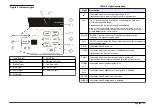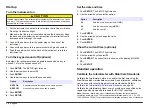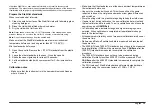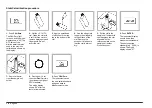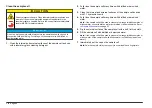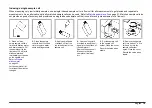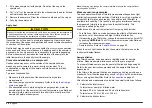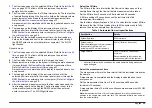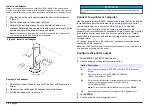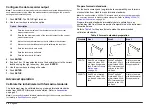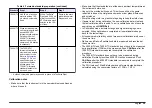
Dilution factor = total volume ÷ sample volume
Example: Dilution factor = 100 ÷ 20 = 5
3.
Calculate the actual turbidity:
Actual turbidity = measured value × dilution factor
Example: Measured value = 2450 NTU
Actual turbidity = 2450 × 5 = 12,250 NTU
Figure 6 Prepare filtered sample using membrane or glass-fiber
filter
1
Filter pump
4
Stopper
7
Filter
2
Hose
5
Filter holder
3
Filter flask
6
Tweezers
Turbidity measurement
W A R N I N G
Potential explosion and fire hazard. This instrument is for measuring water based
samples. Do not measure solvent or combustible based samples.
For accurate turbidity readings use clean sample cells and remove air
bubbles. Refer to
on page 18 and
on page 23.
Measurement notes
Proper measurement techniques are important in minimizing the effects
of instrument variation, stray light and air bubbles. For accurate and
repeatable measurements:
Instrument
• Make sure that the instrument is on a level, stationary surface that is
free of vibration during the measurement.
• Instrument stabilization is immediate. No warm-up time is necessary.
• Always close the sample compartment lid during measurement,
calibration and storage.
• Remove the sample cell from the instrument and turn off the
instrument if the instrument is stored for an extended time period
(more than a month).
• Keep the sample compartment lid closed to keep dust and dirt out.
Sample cells
• Always cap the sample cell to prevent spillage of the sample into the
instrument.
• Always use clean sample cells in good condition. Dirty, scratched or
damaged cells can result in readings that are not accurate.
• Make sure that cold samples do not “fog” the sample cell. Refer to
Prevent condensation on a sample cell
on page 24.
• Store sample cells filled with distilled or deionized water and cap
tightly.
• For the best accuracy, use a single sample cell for every
measurement or a flow cell.
English
25
Summary of Contents for 2100AN IS
Page 1: ...DOC022 53 80206 2100AN IS 05 2014 Edition 4 User Manual...
Page 2: ......
Page 51: ......

